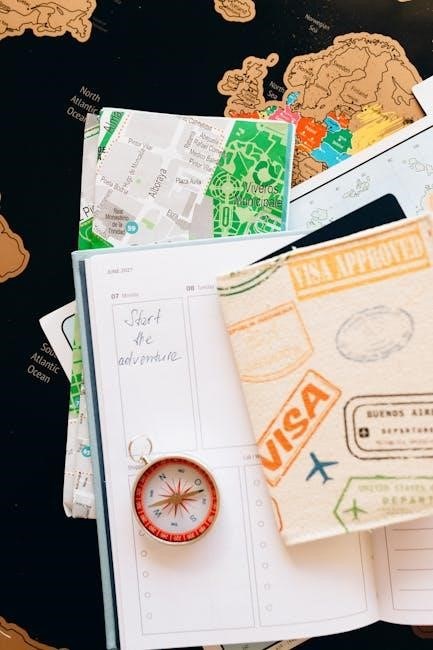
Navigating the world of planners can be overwhelming, especially when faced with a multitude of sizes. This guide aims to clarify the common dimensions and help you find the perfect fit for your needs.
Choosing the right planner size is a crucial step in maximizing its effectiveness for your personal or professional life. The size determines not only the portability of your planner but also the amount of space you have for writing, planning, and organizing your thoughts. From compact pocket planners designed for on-the-go use to expansive A4 planners offering ample room for detailed scheduling, the options are vast and varied. Understanding the different sizes available and their specific dimensions is essential for selecting a planner that seamlessly integrates into your daily routine. This guide will walk you through the most common planner sizes, providing you with the information you need to make an informed decision. We’ll explore the dimensions of each size, discuss their ideal uses, and highlight the factors to consider when making your choice. Whether you’re a student, a busy professional, or simply someone who enjoys staying organized, finding the right planner size can significantly enhance your productivity and help you achieve your goals. So, let’s dive in and discover the world of planner sizes together!
Common Planner Sizes and Dimensions
When it comes to selecting a planner, understanding the standard sizes and their dimensions is paramount. These measurements dictate the planner’s portability, writing space, and overall usability. Among the most popular options are A5, Personal, and Pocket planners, each catering to distinct needs and preferences. The A5 planner, with its dimensions of 5.8 x 8.3 inches, strikes a balance between portability and ample writing space, making it a favorite for students and professionals alike. The Personal size planner, slightly smaller at approximately 3.75 x 6.75 inches, offers a more compact option for those who prefer a planner that’s easy to carry around. Finally, the Pocket planner, the smallest of the three at around 3.2 x 4.7 inches, is designed for ultimate portability, fitting comfortably in a pocket or small purse. Each of these sizes has its own advantages and disadvantages, and the best choice for you will depend on your individual needs and lifestyle. In the following sections, we’ll delve deeper into each of these common planner sizes, exploring their specific features and benefits to help you make an informed decision. We will provide detailed information about their dimensions and practical applications.
A5 Planner (5.8 x 8.3 inches)
The A5 planner, measuring approximately 5.8 x 8.3 inches (148 x 210 mm), is a widely favored choice due to its versatile size. It offers a sweet spot between portability and sufficient writing space, making it suitable for various planning needs. The A5 size is large enough to accommodate detailed daily schedules, notes, and to-do lists without feeling cramped, yet compact enough to be easily carried in a bag or backpack. This balance makes it a popular option for students, professionals, and anyone who needs a reliable planning tool on the go. The ample writing area allows for creative planning layouts, including detailed task breakdowns, habit trackers, and goal setting. Many users appreciate the A5 planner for its ability to handle both structured and unstructured planning, providing the flexibility to adapt to different planning styles. Furthermore, the A5 size is commonly supported by a wide range of planner inserts, accessories, and cover designs, offering extensive customization options. Whether you prefer a ring-bound, disc-bound, or stitched notebook format, you’re likely to find an A5 planner that meets your specific requirements. Its popularity also means a greater availability of printable templates and digital inserts that can be easily adapted to suit your personal planning needs.

Personal Size Planner (3.75 x 6.75 inches)

The Personal size planner, typically measuring around 3.75 x 6.75 inches (95 x 171 mm), strikes a balance between portability and functionality, making it a popular choice for individuals who need a planner that’s easy to carry around. Slightly larger than a pocket planner but still compact, it offers enough space for daily planning, appointments, and note-taking without being bulky. This size is particularly well-suited for those who prefer a more streamlined approach to planning and want to avoid carrying a larger, heavier planner. The Personal size is often favored by individuals who appreciate the convenience of a smaller format but still require sufficient room to write down their daily tasks and reminders. It’s a great option for professionals, students, or anyone who needs to keep track of their schedule and to-do lists while on the go. The compact size makes it easy to slip into a purse, briefcase, or backpack without taking up too much space. Despite its smaller size, the Personal planner still offers enough room for customization with various inserts, dividers, and accessories. This allows users to personalize their planner to fit their specific needs and preferences, making it a versatile and practical choice for everyday planning. Many popular planner brands, such as Filofax, offer a wide range of Personal size planners and accessories, making it easy to find the perfect fit for your planning style.
Pocket Planner (3.2 x 4.7 inches)
The Pocket planner, typically sized around 3.2 x 4.7 inches (81 x 120 mm), is the ultimate in portability, designed for individuals who need a planner that can easily fit into a pocket or small purse. This compact size makes it ideal for those who are constantly on the go and need to keep their schedule and to-do lists readily accessible. While the writing space is limited due to its small size, the Pocket planner is perfect for jotting down quick notes, appointments, and reminders. It’s a great option for minimalists or those who only need to track a few essential tasks each day. Despite its small size, Pocket planners can still be quite functional, with options for weekly or monthly layouts, note pages, and even small calendars. They are often used as a secondary planner to supplement a larger, more detailed planner or as a simple tool for keeping track of essential appointments and tasks. The Pocket size is also popular for travel, as it’s easy to carry around and doesn’t take up much space in a suitcase or travel bag. Several popular planner brands offer Pocket-sized planners, including Filofax, Foxy Fix, and Louis Vuitton (PM agenda). These planners often come with a variety of inserts and accessories, allowing users to customize their planner to some extent. While the writing space may be limited, the Pocket planner’s portability and convenience make it a valuable tool for staying organized and on track, especially for those with busy lifestyles. The small size encourages brevity and focus, helping users prioritize their most important tasks and appointments.
Other Popular Planner Sizes
Beyond the standard A5, Personal, and Pocket sizes, a variety of other planner dimensions cater to specific needs and preferences. These alternative sizes offer different balances of portability, writing space, and overall functionality. One notable category is the Happy Planner, which comes in several distinct sizes, each with its own unique charm and purpose. The Happy Planner Mini, for example, is a compact option similar in size to a Personal planner, while the Happy Planner Classic provides a larger writing area, comparable to an A5 planner. The Happy Planner Big is the largest size, offering ample room for detailed planning and creative expression. Another popular size is the B5 planner, measuring approximately 6.9 x 9.8 inches (176 x 250 mm). The B5 size offers a sweet spot between the A5 and A4 sizes, providing a comfortable writing area without being too bulky to carry around. It’s a good choice for students or professionals who need to take notes and manage projects. Finally, the A4 planner, at 8.27 x 11.69 inches (210 x 297 mm), is the largest of the common planner sizes. It offers the most writing space and is suitable for those who need to track a lot of information or prefer to spread out their planning. A4 planners are often used for home management, project planning, or academic purposes. These various sizes – Happy Planner (Mini, Classic, Big), B5, and A4 – each offer advantages depending on individual needs. The choice depends on how much space you want, the writing space you need, and the overall balance between portability and functionality. Consider your daily planning habits and how much detail you need to include in your planner when making your decision.
Happy Planner Sizes
The Happy Planner system is renowned for its disc-bound design and customizable features, but it’s also notable for offering a range of distinct sizes to suit diverse planning styles. Understanding these sizes is crucial when choosing a Happy Planner that aligns with your needs. The Mini Happy Planner is the smallest option, ideal for on-the-go planning and fitting into smaller bags; Its compact size makes it perfect for individuals who prioritize portability and prefer a minimalist approach to planning. The Classic Happy Planner is the most popular size, striking a balance between writing space and portability. It provides ample room for daily tasks, appointments, and notes, while still being manageable to carry around. Many users find the Classic size to be the sweet spot for everyday planning. The Big Happy Planner is the largest size in the Happy Planner lineup, offering the most extensive writing area. This size is well-suited for individuals who require ample space for detailed planning, creative expression, or managing complex projects. The Big Happy Planner is a favorite among those who enjoy decorating their planners with stickers, washi tape, and other embellishments. In addition to these core sizes, Happy Planner sometimes releases limited-edition sizes or variations. These may include planners with different dimensions or layouts, catering to niche planning needs. When selecting a Happy Planner size, consider your daily planning habits, the amount of detail you typically include in your planner, and your preferred level of portability. Each size offers a unique experience, so it’s essential to choose the one that best supports your individual planning style and goals.

B5 Planner (6.9 x 9.8 inches)
The B5 planner size, measuring approximately 6.9 x 9.8 inches (176 x 250 mm), offers a compelling middle ground between the popular A5 and A4 sizes. It provides a generous writing space while remaining relatively portable, making it a versatile choice for students, professionals, and anyone who appreciates a balance between functionality and convenience. The B5 size is particularly well-suited for individuals who find A5 planners too small but don’t want the bulkiness of an A4. Its larger dimensions allow for more detailed note-taking, brainstorming, and scheduling, making it ideal for those with busy lives or complex projects. Students often find B5 planners beneficial for organizing class notes, assignments, and extracurricular activities. The ample writing space allows for clear and concise note-taking, while the manageable size makes it easy to carry in a backpack or tote bag. Professionals can utilize B5 planners for project management, meeting notes, and daily task organization. The larger format provides enough room to track deadlines, action items, and important details, helping to stay on top of work responsibilities. Creatives, such as writers and artists, may also appreciate the B5 size for journaling, sketching, or planning creative projects. The extra space allows for more expansive expression and detailed planning. When choosing a B5 planner, consider the paper quality, binding style, and layout options. Look for planners with thick, smooth paper to prevent bleed-through and ghosting, especially if you plan to use fountain pens or markers. Binding styles can range from spiral-bound to disc-bound to sewn-bound, each offering different levels of flexibility and durability. Layout options may include daily, weekly, or monthly formats, depending on your preferred planning style. Ultimately, the B5 planner size offers a practical and versatile solution for those seeking a balance between ample writing space and portability. Its dimensions make it suitable for a wide range of users and planning needs.
A4 Planner (8.27 x 11.69 inches)
The A4 planner, mirroring standard letter size paper at 8.27 x 11.69 inches (210 x 297 mm), provides the most expansive writing area among common planner sizes. This generous format is particularly favored by individuals requiring ample space for detailed planning, extensive note-taking, or complex project management. Its larger dimensions make it an excellent choice for professionals, students managing heavy workloads, or anyone who prefers a comprehensive overview of their schedules and tasks. The A4 planner excels in situations where detailed information needs to be readily accessible. Professionals can utilize it for in-depth meeting notes, project outlines, and strategic planning sessions. The spacious layout allows for clear organization of tasks, deadlines, and important details, promoting efficiency and productivity. Students benefit from the A4 planner’s ability to accommodate extensive class notes, research materials, and assignment schedules. The ample writing space facilitates comprehensive note-taking and efficient study habits. Individuals involved in creative pursuits, such as graphic design or architectural planning, often find the A4 size ideal for sketching, brainstorming, and visualizing complex projects. The larger format allows for detailed drawings and intricate designs. When selecting an A4 planner, consider factors such as paper quality, binding type, and layout design. Opt for planners with thick, high-quality paper to prevent ink bleed-through and ensure a smooth writing experience. Binding options range from spiral-bound to ring-bound to case-bound, each offering varying degrees of durability and flexibility. Layout designs can include daily, weekly, or monthly formats, catering to different planning preferences. While the A4 planner offers unparalleled writing space, its larger size may not be suitable for those prioritizing portability; It is best suited for desk use or for individuals who primarily work in a fixed location. However, for those who value comprehensive planning and detailed note-taking, the A4 planner provides an indispensable tool for organization and productivity.

Factors to Consider When Choosing a Planner Size
Ring-Bound Planner Sizes
Ring-bound planners offer a versatile and customizable planning experience, with the size of the planner largely determined by the ring configuration and the insert size it accommodates. These planners typically utilize a system of rings, most commonly 6 or 7 rings, to hold the planner inserts securely in place. The ring configuration dictates the dimensions of the planner itself, as well as the range of insert sizes that can be used. Common ring-bound planner sizes include A5, Personal, and Pocket, each offering a different balance of portability and writing space. The A5 ring-bound planner, measuring 5.8 x 8.3 inches, is a popular choice for those who desire ample writing space without sacrificing portability. Its larger size allows for detailed planning and extensive note-taking, while still being manageable for carrying in a bag or briefcase. Personal size ring-bound planners, typically around 3.75 x 6.75 inches, strike a balance between portability and functionality. They are compact enough to carry easily, yet still offer sufficient writing space for daily planning and task management. Pocket size ring-bound planners, measuring approximately 3.2 x 4.7 inches, are the most portable option, designed to fit easily into a pocket or small purse. While their writing space is limited, they are ideal for on-the-go planning and quick note-taking. The ring spacing in these planners is crucial for ensuring compatibility with different insert brands and styles. Standard ring spacing configurations exist, but variations can occur, so it’s essential to check the ring spacing before purchasing inserts. Popular ring-bound planner brands, such as Filofax, offer a wide range of sizes and styles to suit individual preferences; These planners often feature customizable layouts, allowing users to tailor the planner to their specific needs. Other brands, like Foxy Fix, also offer ring-bound planners in various sizes with unique design elements. When choosing a ring-bound planner, consider the size that best suits your planning style, the ring configuration, and the availability of compatible inserts. The flexibility and customization options of ring-bound planners make them a popular choice for those who value a personalized planning experience.